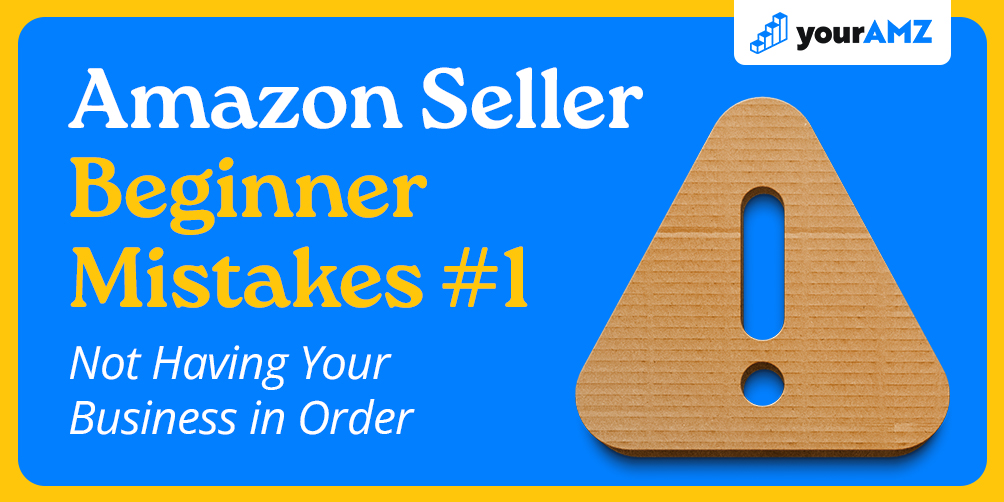Amazon Seller Beginner Mistakes Part 1: Not Having Your Business in Order

Watch The Video:
In this series, we will cover some very common, but easy to avoid mistakes that many brands make when selling on Amazon. We call these “beginner mistakes”, but even some longer-term sellers make many of these beginner mistakes as well.
By learning to avoid these mistakes in advance, you can put your brand in the best possible position to success on Amazon.
Amazon Seller Beginner Mistakes Part 1: Not Having Your Business in Order
Some of the most common mistakes we see when launching our customers’ brands on Amazon happen before their accounts are even created. These are also the mistakes that are the easiest to avoid if you know about them in advance.
Amazon requires certain documentation for your business before you set up your brand on Amazon. Here are 3 common mistakes that are easy to avoid when first starting to sell on Amazon.
#1. Not Having your Business Setup with a Tax ID, Checking Account, and Credit Card
Note: The information below only applies to businesses in the United States. If your business exists in another country, follow the laws of that country.
If you want to be a legitimate Amazon seller, you must set up a real business with a real business address. This means filling out the required paperwork with the state (or country) that you want to set up your business in.
After you set up your business, you will need to get a Tax ID (EIN) from the federal government. In the United States, you would request one from the federal government on their website.
Once you get your Tax ID, you can go to a bank and set up a checking account and get a credit card account for your business. You will need both accounts to set up your business in Amazon Seller Central.
#2. Not Having a Registered Trademark
Another common mistake that people make is to start selling on Amazon without having a registered trademark. While you can sell on Amazon without a trademark, it is almost impossible to have any success without it.
A registered trademark allows you to register your brand with Amazon Brand Registry. Amazon Brand Registry allows you to have some control over your brand on the Amazon platform. It also gives you access to marketing tools that you would not have access to. This includes access to creating A+ content & brand store, Sponsored Brands & Sponsored Display advertising, and using your GS1 barcode for Amazon FBA.
#3. Not Having GS1 Barcodes For Your Product
Probably the single most common problem we see with new brands is purchasing barcodes that are not from GS1.
GS1 is an organization that issues unique UPC barcodes for use in any marketplace. Amazon requires you to own your own GS1 barcodes to create a listing for your product on Amazon.
Some brands, to save money, purchase their barcodes from a third-party company who originally bought them from GS1. These codes are often reused, which means they may already exist in Amazon’s catalog under another product. Amazon does not allow you to use these barcodes when creating a listing on Amazon.
While you can add your product to Amazon’s catalog without a barcode, it is not recommended. You will be unable to use your barcode in Amazon FBA, which means you have to sticker each unit you send into FBA with Amazon’s warehouse code, which will cost you money.
Conclusion
By taking care to make sure you have everything in your business set up correctly before you start selling on Amazon, you will avoid 3 of the most common mistakes new sellers make when they first get started. Check in to see more beginner mistakes you should avoid in a future video or blog post.
Unlock Your Amazon Potential
%20(1).avif)

.png)

.png)

.png)